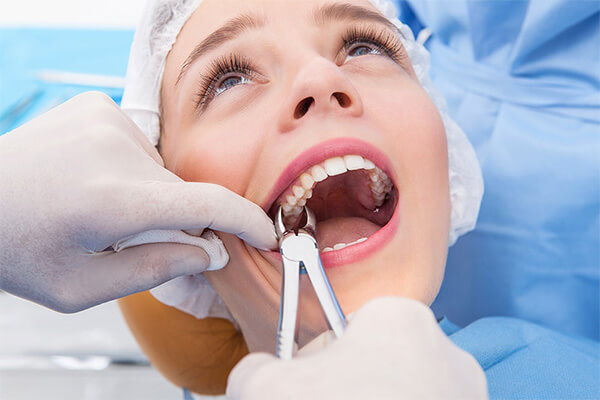
Tooth Extraction
Tooth extractions are common dental procedures that serve various purposes, from alleviating pain to improving oral health. By understanding the basics of tooth extraction and learning simple post-procedure care tips, you can feel more confident about your next dental visit. Whether preparing for your first tooth extraction or simply seeking to understand the process better, here’s what to expect before and after the procedure:
Before a Tooth Extraction
A tooth extraction involves the removal of a tooth from its socket in the bone. Dentists may recommend this procedure for several reasons, including removing a damaged or infected tooth, preparing for orthodontic work, or making room for restorative procedures like dental implants. Understanding the steps involved, before and after, can make the experience smoother and less stressful.
Why Tooth Extractions Are Needed?
Tooth extractions are often necessary to address a specific issue, including:
- Alleviating Pain: When decay or infection damages a tooth to the degree that it cannot be repaired with a filling or crown, removal may help relieve discomfort.
- Correcting Misalignment: Orthodontic treatments may involve removing overcrowded teeth to create more space for alignment.
- Improving Appearance: Removing teeth that cause overcrowding can significantly impact the aesthetics of your smile.
- Preventing or Removing Infection: Extraction is often the best course of action if a tooth is severely infected or risks spreading infection to surrounding teeth and tissue.
Tooth extractions may be recommended for both children and adults for reasons ranging from medical needs to personal cosmetics. Your dentist will review your medical and dental history and track factors such as gum health, bone density, and the issue causing discomfort to determine whether an extraction is suitable for you.
How to Prepare for Your Appointment
Before your procedure, discuss any existing health conditions, allergies, or medications with your dentist. Follow all pre-procedure guidelines provided by the dental office. If sedatives or anesthesia are needed, you may be asked to fast before an extraction. Prepare transportation for your visit because any procedure that uses sedation means you cannot drive afterward.
On the extraction day, your dentist or oral surgeon will use local anesthesia to numb the area around the tooth. For more complex procedures, sedation options like oral or IV sedation may be offered to help you remain comfortable. Once the tooth is removed, the dentist will clean the area and may place stitches to help the healing process.
After a Tooth Extraction
How you care for your mouth after a tooth extraction significantly impacts the recovery process. Your dentist will give you specific instructions for your aftercare, which may include things like:
- Pain and Swelling Management: Mild discomfort and swelling are normal after a tooth extraction. These can be managed by applying a cold compress to the affected area to reduce swelling during the first 24 hours. Taking over-the-counter pain medications, as your dentist recommends, can help with swelling.
- Maintaining Oral Hygiene: While avoiding disturbing the extraction site is good, you should maintain a good oral hygiene routine to lower the risk of infection after the procedure. Brush your teeth gently, avoiding the extraction site for the first couple of days. Then, begin rinsing with warm salt water after 24 hours, or as directed by your dentist, to keep the area clean.
- Dietary Recommendations: Stick to soft, easy-to-eat foods like yogurt, mashed potatoes, scrambled eggs, and applesauce in the days following your procedure. Avoid hot, spicy, or hard foods until your dentist confirms it’s safe to reintroduce them.
Learn More About Tooth Extractions
Whether you need an extraction to relieve pain, improve alignment, or prepare for another procedure, a professional is there to guide you through every step. Following your dentist’s guidance can help promote faster healing while preventing complications. Learn more about what to expect during a tooth extraction and consult with a dentist today.
Discover the latest news and updates on The Blog Verge






